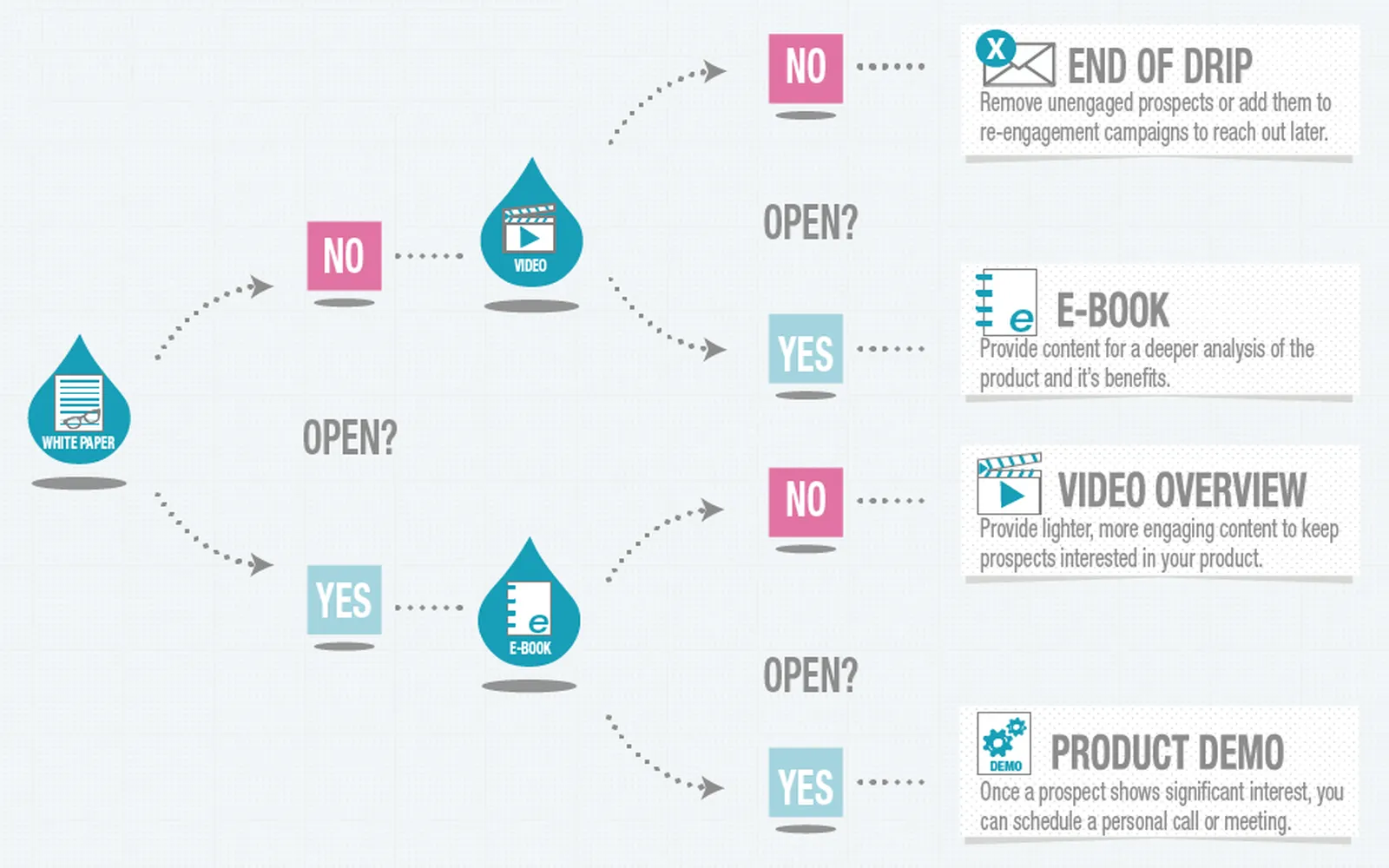Drip marketing is an automated strategy that sends out a series of pre-written messages to potential customers over a set period. This approach is designed to nurture leads and keep your brand top-of-mind for your audience. The goal of drip marketing is to engage potential customers with relevant content at the right time, ultimately guiding them through the sales funnel. To better understand drip marketing, let's explore its key components, benefits, and some successful examples to learn from.
Key Components of Drip Marketing
Drip marketing campaigns are typically comprised of several elements that work together to create a cohesive strategy. Here are the essential components:
- Target Audience: Identify and segment your audience based on their behavior, preferences, and demographics.
- Content Creation: Develop valuable content that addresses the needs and pain points of your audience.
- Email Automation: Utilize email marketing tools to automate the sending of your messages based on specific triggers.
- Analytics and Reporting: Monitor the performance of your campaigns through metrics such as open rates, click-through rates, and conversion rates.
Benefits of Drip Marketing
Implementing a drip marketing strategy offers numerous advantages for businesses looking to optimize their marketing efforts. Here are some significant benefits:
- Increased Engagement: By delivering relevant content over time, you keep your audience engaged and encourage them to interact with your brand.
- Lead Nurturing: Drip marketing helps cultivate relationships with leads, guiding them along their customer journey until they are ready to make a purchase.
- Time Efficiency: Automation allows you to set up campaigns in advance, saving time and ensuring consistency in your messaging.
- Higher Conversion Rates: Personalized and timely content can significantly boost conversion rates, as it aligns with the interests of your audience.
Successful Examples of Drip Marketing
Many companies have successfully implemented drip marketing campaigns. Here are a few examples that illustrate effective strategies:
1. HubSpot
HubSpot, a leading marketing software company, is well-known for its educational content. They use drip marketing to nurture leads by sending a series of emails that guide potential customers through the sales process. For instance, a new subscriber might receive a welcome email followed by a series of educational emails about inbound marketing strategies. This approach not only positions HubSpot as a thought leader but also builds trust with their audience.
2. Dropbox
Dropbox effectively uses drip marketing to onboard new users. After signing up, users receive a series of emails that highlight different features of the platform. Each email is designed to encourage users to explore and utilize specific functionalities, which helps enhance user retention and satisfaction. By breaking down the onboarding process into bite-sized pieces, Dropbox ensures that users are not overwhelmed and can fully appreciate the value of their service.
3. Amazon
Amazon employs drip marketing through their recommendation engine. After a user browses or purchases a product, they receive personalized follow-up emails suggesting related items or accessories. This tailored approach keeps customers engaged and encourages repeat purchases. Amazon's use of data analytics allows them to send timely and relevant content, enhancing the overall customer experience.
How to Create Your Own Drip Marketing Campaign
Developing a drip marketing campaign may seem daunting, but by following these steps, you can create an effective strategy tailored to your business:
- Define Your Goals: What do you want to achieve with your drip marketing campaign? Set clear objectives, such as increasing leads, enhancing customer retention, or driving sales.
- Segment Your Audience: Divide your audience into specific groups based on their interests and behaviors. This will allow you to send targeted messages that resonate with each segment.
- Craft Compelling Content: Develop valuable and engaging content that addresses the pain points of your audience. Ensure that the messaging aligns with their stage in the buyer's journey.
- Choose the Right Tools: Utilize email marketing platforms like Mailchimp or ActiveCampaign to automate your drip campaigns. These tools offer analytics and reporting features to monitor performance.
- Test and Optimize: Continuously analyze the performance of your campaigns and make adjustments as necessary. A/B testing different subject lines, messaging, and timing can provide valuable insights.
Conclusion
Drip marketing is a powerful strategy for businesses looking to engage their audience effectively and nurture leads. By automating the delivery of relevant content, companies can save time while increasing engagement and conversion rates. Learning from successful examples such as HubSpot, Dropbox, and Amazon can provide valuable insights into how to implement a successful drip marketing campaign. By following the outlined steps, you can create a tailored strategy that resonates with your target audience and drives results.
Incorporating drip marketing into your overall marketing strategy can significantly enhance your brand's presence and effectiveness in reaching potential customers. So, start planning your drip marketing campaign today and watch your engagement soar!





